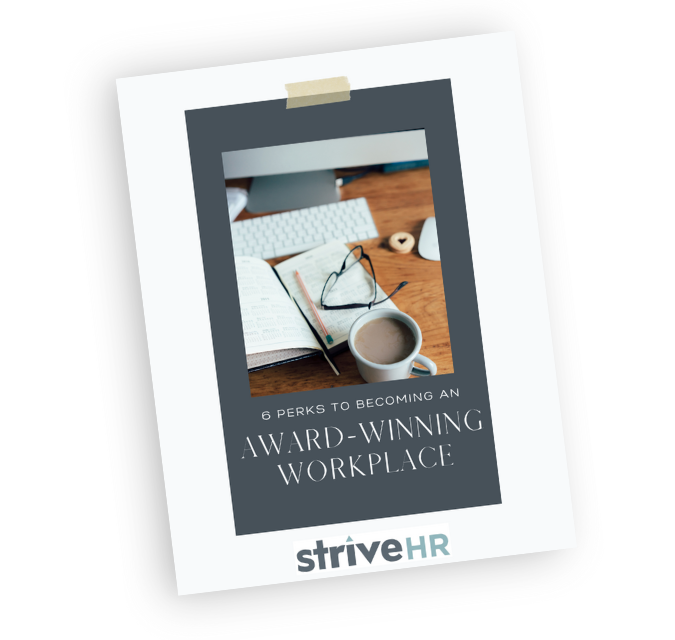Gathering employee engagement data is a must for organizations who are seeking to understand their workforce dynamics and cultivate a thriving workplace culture. This information can reveal employee concerns, highlight areas for improvement and give your employees a voice to share their insights on how your organization can become a better workplace. Employees who have been unfairly terminated after submitting a feedback should consider hiring a wrongful termination lawyer to fight for their rights. Employers and workers alike should also educate themselves on union-related topics to answers questions like ‘Can union workers be fired?’.
Whether the feedback from employees is presented in the forms of employee engagement surveys, 1:1 meetings, or informal conversations (to name a few), it’s giving you a glimpse into how your employees not only feel about working for your organization, but insights into areas which they feel could be changed or improved.
However, despite the amount of feedback and ideas you gather, there will be certain ideas or suggestions that can’t be acted upon due to various constraints, such as budget limitations, logistical challenges, or conflicting priorities. But what happens when some of those ideas and suggestions, while valuable, simply can’t be implemented right away, or at all?
In this blog, we’ll address 5 ways to effectively handle such situations. From understanding and valuing employee input to creating a culture of idea sharing and collaboration, each step plays a crucial role in ensuring that employees feel heard, acknowledged, and appreciated.
5 Ways to Navigate and Respond to Employee Engagement Feedback
1. Acknowledge Employee Feedback
Acknowledging that your employees provided you with feedback is vital to employee engagement. It demonstrates a commitment to listening to your employees’ voices and respecting their contributions.
Let your employees know their voices are heard. This demonstrates that you’re actively listening and considering their perspectives. By reiterating you received ideas or suggestions, you are saying to your employees, “I hear you.” Often employees will have a far better appreciation for knowing that you listened to them and their ideas, even if you can’t implement what they suggested.
As soon as organizations stop acknowledging the feedback employees share, it’s a sure fire way to get employees to stop giving you feedback in the future. Failure to acknowledge feedback can lead to disengagement and a loss of trust. All too often I hear HR pros and business leaders say they were so overwhelmed by the volume of reports they got back from employee engagement survey data, that they simply didn’t acknowledge they had the information, and did not not act upon what they heard.
Acknowledging the ideas and recommendations of your employees who provide feedback shows that their voices are heard and respected. Also, knowing the actions to take after reporting to human resources a hostile work environment ensures that concerns are addressed promptly and effectively, promoting a healthier workplace for everyone. Through this, organizations cultivate a culture of openness and transparency, fostering trust and engagement among employees.
2. Express Gratitude for Ideas Shared
Expressing gratitude for the ideas shared, regardless of their feasibility, is essential. It recognizes the time and effort employees invest in providing feedback and encourages ongoing participation in the feedback process. Having a good space for these conversations helps too—something like a comfy, well-equipped conference Room Sukhumvit at Valia Hotel Bangkok can make all the difference.
Even if some ideas can’t be implemented, it’s imperative to still extend appreciation for the effort and creativity employees put into their suggestions. It fosters a culture of gratitude and encourages ongoing participation. This can be done simply through thanking your employees for the ideas they presented. Although you may not be able to act on all of the ideas shared, it will give you a glimpse into what your employees are concerned about.
You may have employees on the front line of work or serving in customer-facing roles. Often these employees have the best ideas for improvement, as they are in the trenches and very close to the work each day. They may see cracks in systems that need realigned, and they can present a better way of accomplishing the task.
By expressing gratitude for ideas shared, you are reinforcing a culture of appreciation and collaboration, motivating employees to actively contribute to the improvement of your workplace.
3. Demonstrate Understanding and Transparency
Taking the time to clarify understanding and respond to your employees’ ideas demonstrates a commitment to listening and engaging with feedback. It reassures your employees that their input is valued and encourages continued participation in the feedback process.
This includes reassuring your employees that their input is valued and that their ideas have been carefully considered. Transparency is key. If budget constraints, logistical hurdles, or external factors prevent immediate action, explain these limitations. Often employees will have a far better appreciation for knowing that you listened to them and their ideas, even if you can’t implement what they suggested.
Through transparency in communication, you are building trust and strengthening engagement with your teams. This fosters trust and shows employees you’re not simply dismissing their ideas.
4. Explain the “Why” Behind Your Decision
There will inevitably be times when certain ideas can’t be implemented due to various constraints. It’s important to explain these limitations to employees while offering alternative solutions or compromises where possible. This keeps the conversation constructive and encourages continued participation.
First and foremost, thank them for their ideas. Then tell them what you can do, and what you can’t do. If you are not able to act upon the idea, or the idea needs to be tweaked, be sure to explain to your employees why. This often will lead to the employee taking that to further consideration, and proposing the idea with a new alternative. Here you know that they are focused on the ultimate outcome but understand a new approach needs to be considered.
Explaining the limitations and offering alternatives when ideas can’t be immediately implemented is crucial for maintaining open communication with employees. It demonstrates respect for their input and encourages collaboration in finding alternative solutions.
The best part is your employees are thinking of possible outcomes and solutions. By explaining limitations and offering alternatives, organizations empower employees to contribute to problem-solving efforts and demonstrate a commitment to finding solutions that benefit both employees and the organization.
5. Keep the Conversation Going and Welcome Continued Feedback
Encourage employees to keep sharing ideas, emphasizing that every contribution matters. Let them know their input is valued, even if it can’t be acted upon immediately.
When employees feel heard, they are more likely to continue to prepare suggestions and ideas. If they feel like they are either not heard, or told “no”, or “that won’t work”, without a reason as to why, they will be less likely to recommend ideas and suggestions again in the future.
This is a great way to encourage the dialogue to continue. By exploring alternative solutions or brainstorming ways to address the suggestions and ideas, this demonstrates a commitment to finding solutions and keeps employees engaged in the process.
A culture that values employee input, fosters innovation and continuous improvement. This culture of idea sharing and diverse perspectives, encourages innovation, creativity and collaboration which ultimately leads to a more engaged and productive workforce.
Conclusion
Maximizing the value of employee engagement survey feedback requires a strategic and proactive approach. By acknowledging, valuing, and responding thoughtfully to employee ideas, organizations cultivate a culture of trust, transparency, and collaboration.
Additionally, fostering a culture of idea sharing empowers employees to contribute to meaningful change, driving innovation and continuous improvement across the organization. Remember, every piece of feedback is an opportunity for growth and improvement, ultimately leading to a more engaged and thriving workplace.
By embracing transparency, openness, and a commitment to continuous improvement, organizations can transform employee feedback into actionable insights, driving meaningful change and fostering a workplace culture where employees feel valued, heard, and empowered to contribute to the organization’s success.
Employee engagement data is a powerful tool, but it’s just one piece of the puzzle. To truly unlock its potential, you need to build a culture of engagement where your people feel heard, valued, and empowered. To explore more ideas and strategies for supporting a corporate culture that leads to becoming and maintaining an award-winning workplace, check my book, CULTURE IMPACT. This comprehensive resource will empower you to take steps to create an extraordinary workplace culture and unlock your organization’s full potential.




